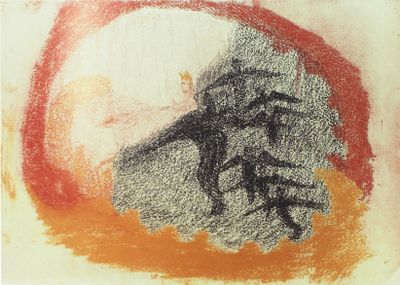Ancient Persian culture

The Urpersian culture or ancient Persian culture (5067 - 2907 BC) was the second post-Atlantean cultural epoch. Since the vernal equinox was then in the sign of Gemini it is also called the Age of Gemini. In it, under the guidance of the great Initiated Zarathustra the astral body was further trained.
In the Apocalypse of St. John, in the epistle to the community of Smyrna (present-day Izmir), reference is made to the ancien Persian period.
In the Urpersian culture, a memory of the hyperborean time shone forth, in which the Sun separated from Earth, but which at that time still had the Moon within it. This is also where the descriptions of the biblical creation story begin. From now on, the light world of the sun stood opposite the dark world of the earth. While the Cattle still lived in unity, the principle of duality, of polarity, now emerged, which was expressed through the opposition of the light god Ahura Mazdao (Ormuzd) and his dark adversary Ahriman.
„Now let us consider the second cultural period. In the principle of light and darkness we have the religious consciousness of the primeval Persian cultural period. There the great initiates placed two beings, one personified in the Sun and the other in the Moon, opposite each other. Ahura Mazdao, the aura of light, Ormuzd, is the being whom the Persians worshipped as the supreme god; Ahriman is the evil spirit, the representative of all the beings who possessed the Earth plus the Moon. A reminder of the second earth epoch is the religion of the Persians.“ (Lit.:GA 106, p. 35)
The primeval Persian cultural epoch is distinguished from the primeval Indian culture by the fact that here man begins to direct his attention to the gradual conquest of the physical plan (culturally here primarily as agriculture and animal husbandry). To the representative of the primeval Indian culture, the outer material world was Maya - and it was not considered worthwhile to penetrate it further.
Literature
- Rudolf Steiner: Welt, Erde und Mensch , GA 105 (1983), ISBN 3-7274-1050-7 English: rsarchive.org German: pdf pdf(2) html mobi epub archive.org
- Rudolf Steiner: Ägyptische Mythen und Mysterien, GA 106 (1992), ISBN 3-7274-1060-4 English: rsarchive.org German: pdf pdf(2) html mobi epub archive.org
- Rudolf Steiner: Das Matthäus-Evangelium, GA 123 (1988), ISBN 3-7274-1230-5 English: rsarchive.org German: pdf pdf(2) html mobi epub archive.org
 |
References to the work of Rudolf Steiner follow Rudolf Steiner's Collected Works (CW or GA), Rudolf Steiner Verlag, Dornach/Switzerland, unless otherwise stated.
Email: verlag@steinerverlag.com URL: www.steinerverlag.com. Index to the Complete Works of Rudolf Steiner - Aelzina Books A complete list by Volume Number and a full list of known English translations you may also find at Rudolf Steiner's Collected Works Rudolf Steiner Archive - The largest online collection of Rudolf Steiner's books, lectures and articles in English. Rudolf Steiner Audio - Recorded and Read by Dale Brunsvold steinerbooks.org - Anthroposophic Press Inc. (USA) Rudolf Steiner Handbook - Christian Karl's proven standard work for orientation in Rudolf Steiner's Collected Works for free download as PDF. |
